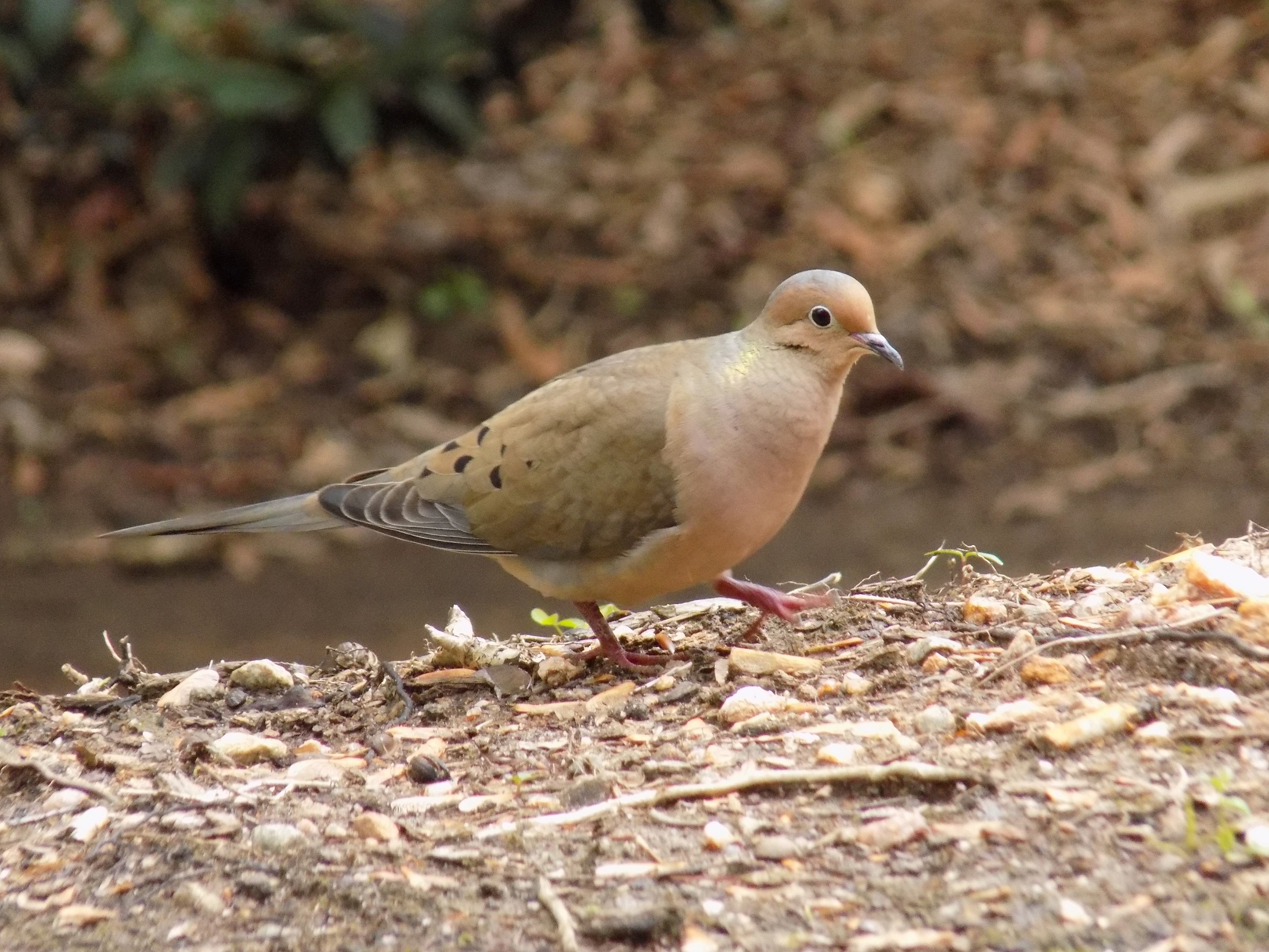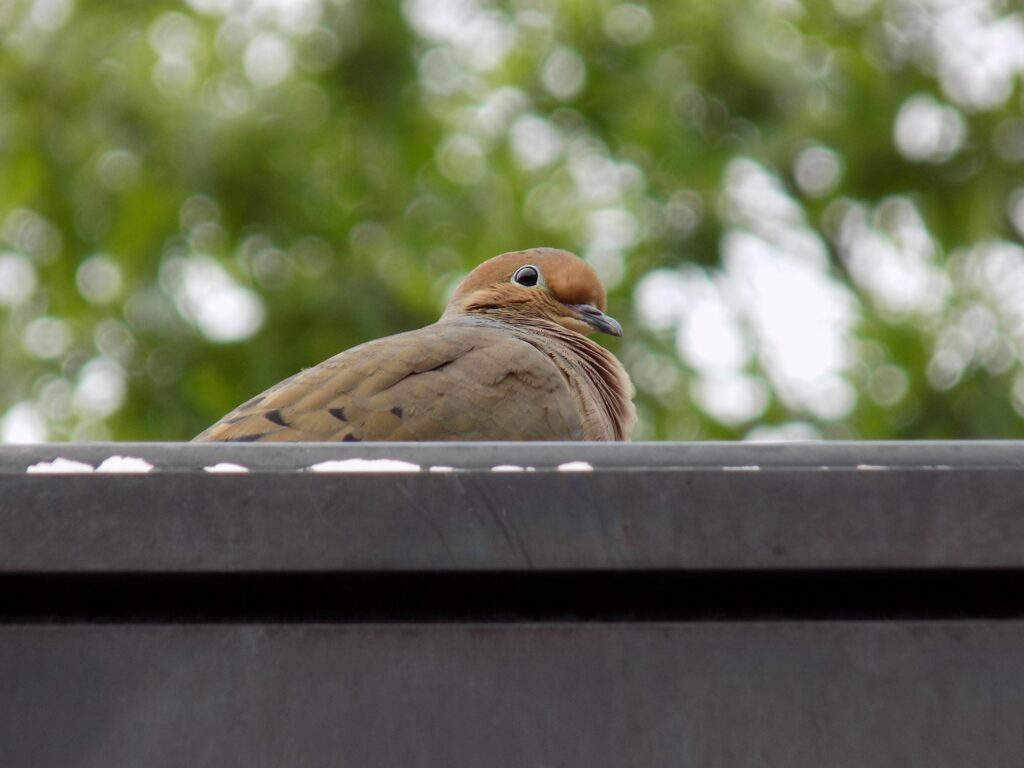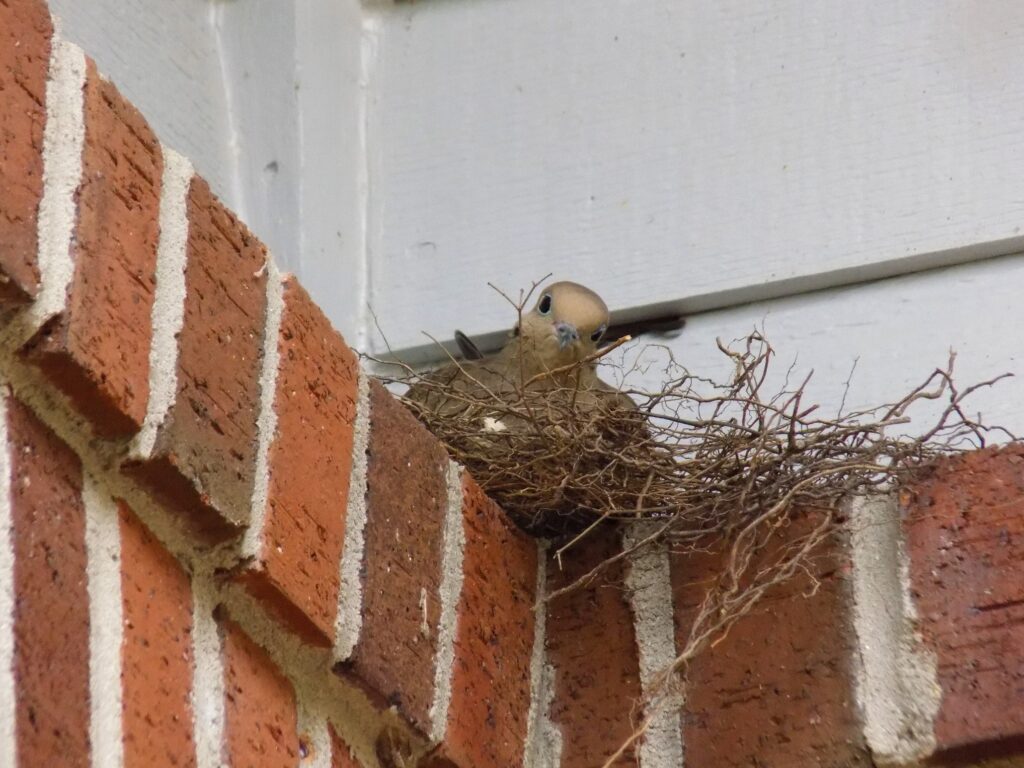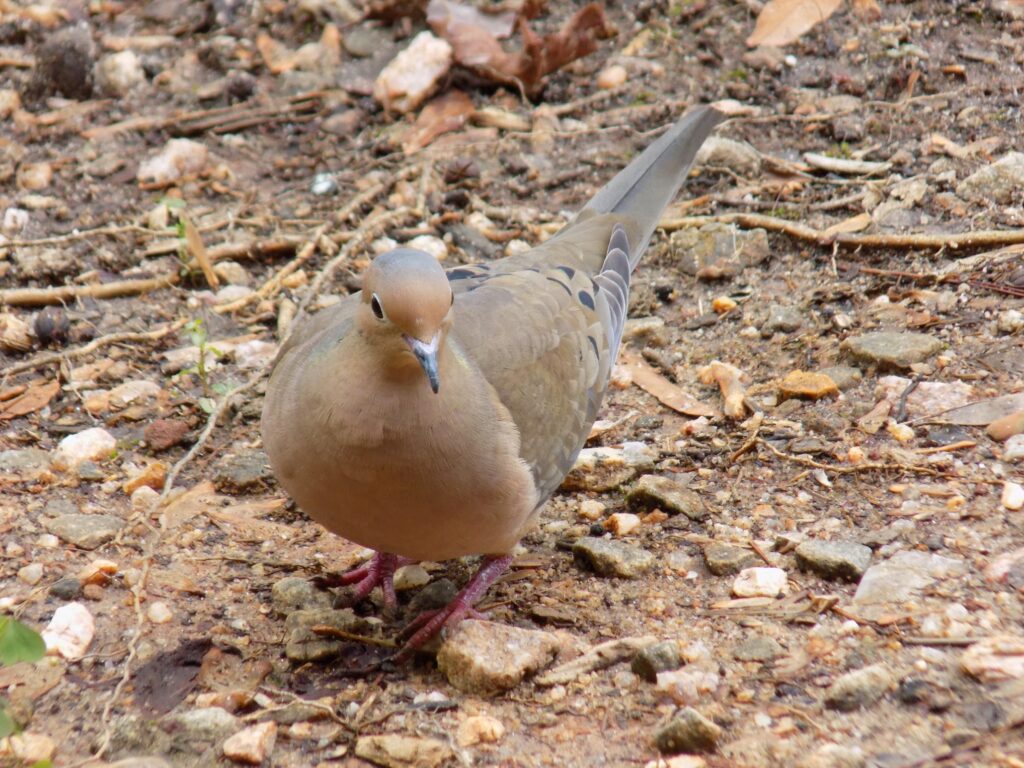



This week for Flora and Fauna Friday we’re sobered by the sound of the hollow grieving moans of the Mourning Dove (Zenaida macroura).
The Mourning Dove is a medium-sized Dove found throughout the United States. Their neck and breast are washed in rosy tones over a marble pelage and decked by wings of weathered wood with umber grains and ebony knots. They perch upright on compact coral columns, trailing their silver-trimmed and lance-headed tail. The soft lines of their rounded head encircle a beady eye of bottomless black, wearily ringed by soft swelling cyan. Darkened bags hang upon their cheeks as a blush of iridescent sunset trickles down the face. Abrupt at the front protrudes a delicate bill, down-ticked and dour. A veil of somber mourning subtly smothers the bird. An intangible aura their defeated and sorrowful song solidifies. A song of sadness, in simplest terms. As they depart, their wings whistle the echoes of a frantic sobbing that fades sharply into the empty autumn air.
Despite my anthropomorphizing to the contrary, this species is both personable and loving. Their soft, cooing song brings a tranquil nostalgia to many who hear it. Mourning Doves are undeniably stately and handsome fowl. Their large eyes and soft features produce a cherubic charm. They are a common visitor to feeders, fields, and yards where they strut in short strides to scratch and peck at scattered seeds. Doves are known to be flighty and skittish, bursting from the bare ground with explosive whistling beats. These whistles are not calls but rather the vibrating hum of their flight feathers. These reedy notes help to quickly alert other Doves of danger when one member of the flock takes flight. A trait we see in other flocking fowl, to include Mergansers and Wood Ducks. Mourning Doves mate for life. In selecting a nest the couple goes house hunting. The male leads his partner to a series of candidate sites and she chooses her favorite. (Preferably some place with granite ledges that’s in the suburbs but still close to downtown, or the crook of a tree will usually do.) Mourning Doves, along with the other Doves and Pigeons, have a unique means of feeding their young. Doves produce a substance called “pigeon-milk” from their crop, which is a pocket birds have in the esophagus for storing food. Pigeon-milk does much the same thing as regular milk but is thicker and denser with protein. Mourning Doves are one of our few species of resident game bird in SC. Although their season is sporadic, you may have enjoyed the taste of wild dove, most often baked in a bacon-wrap, on yesterday’s Thanksgiving dinner.